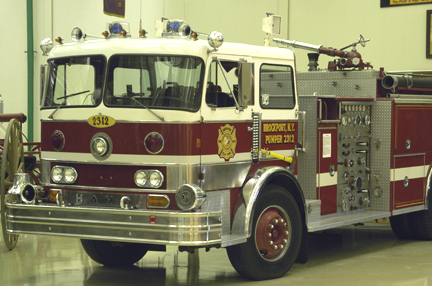Learn More
Explore the Museum collection
![]() Firefighters Breathe a Sigh of Relief
Firefighters Breathe a Sigh of Relief
![]() A Foggy Day in Firefighting Town
A Foggy Day in Firefighting Town
For Educators


Innovation of the Era: The Use of Teams of Trucks
The late 1900's saw a more team truck approach to firefighting in areas that volunteer firefighters protected. Instead of one main truck, fire departments often had a pumper, a tanker and a ladder truck housed at their station. A pumper pumps the water from a hydrant, tanker or body of water through a hose onto the fire. A tanker is used to transport water to areas where there are no hydrants. This was critical at first, as pumpers did not carry any water: today most carry a limited supply of water. A ladder truck has a hydraulically operated ladder that helps the firefighters either rescue victims of fire from upper floors or fight the fire from above. The ladder truck also carries many other ladders and equipment. Functioning as a team, these trucks gave firefighters an arsenal of firefighting apparatus that brought firefighting into the modern age. Today, some N.Y. State fire companies have apparatus known as a "quad" or a "quint." This is one truck that is capable of performing multiple functions, such as pumping, water tank, carrying fire hose, aerial device and carrying ground ladders. Each one of these functions makes up one of its four (quad) or five (quint) capabilities.

